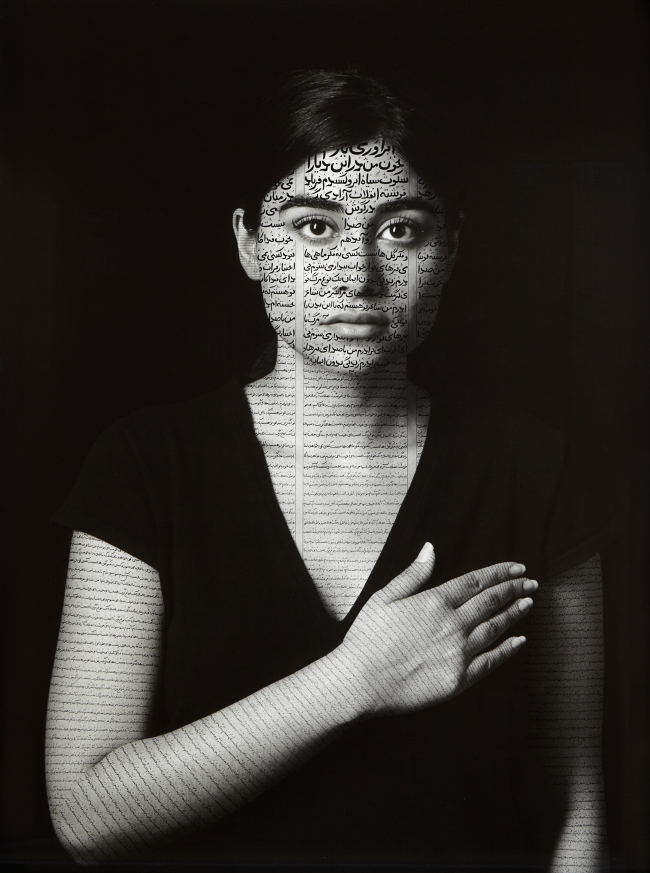Seoul Arts Center exhibition highlights importance of human touch in digital age, and how calligraphy has affected other art forms
 “Nida” by Shirin Neshat. (Seoul Arts Center)
“Nida” by Shirin Neshat. (Seoul Arts Center)
What do some of the best-known modern abstract artists such as Willem de Kooning, Hans Hartung and Cy Twombly have in common?
The contemporaries who left a significant impact on abstract art found their artistic motivation in Eastern calligraphy. Calligraphic expressions inspired American artist Twombly, whose works feature freely scribbled, calligraphic-style drawings; Hans Hartung works are largely defined with bold brushstrokes; and de Kooning works were an extension of lines.
The paintings of the famous Western abstract art masters and contemporary artists around the globe, especially those expressing elements of calligraphy, gathered under the theme of “At the Nexus of Painting and Writing” at the Seoul Art Calligraphy Museum.
The exhibition displays 79 works by 59 artists whose works highlight the importance of the physical human touch in the digital age, and the influence of calligraphy on contemporary art.
Almost 90 percent of the pieces on exhibit came from the Frankfurt-based Written Art Foundation, which sponsored the exhibition with the German Embassy in South Korea.
The Written Art Foundation, founded in 2011 by the German pharmaceutical company Beohringer Ingelheim and funded by its chairman, values handwriting in the digital age when most messages are typed. It has spearheaded the movement to revive handwriting by carrying out educational lessons, holding exhibitions featuring artworks that highlight the art of handwriting and creating collections of paintings that explore handwriting.
“The foundation believes in the power of handwriting, and that is through art and peace,” said Andre Kneib, who serves as spokesperson and counselor for the foundation, and is also an artist who draws Chinese characters. “There are still conflicts among the Western, Eastern and the Middle Eastern cultures. But I think we can find peace in art which facilitates communication, which I hope can lead to peace,” Kneib said at the guided press tour Friday. Kneib learned calligraphy from the renowned Korean artist Lee Ung-no, whose works are a unique combination of traditional Korean brushstrokes and modernity.
Chae Hong-ki, curator of the exhibition, also said calligraphy has been the essence of Eastern and Middle Eastern art, and it’s something which gave inspiration to Western artists for their practice in abstract expressions.
The paintings range from Eastern calligraphic works to modern abstract paintings, divided into five themes that shed light on the elements of handwriting.
The first part focuses on the movement of body which is believed to be the starting point of abstract expression.
The bold brushstroke painting of Hans Hartung, who was greatly influenced by Japanese calligraphy and Eastern philosophies, is on display along with de Kooning’s “Untitled 1975,” a work of freely drawn lines.
Lee Jung-woong’s “Brush” defines the ambience of the exhibition, hung on the second floor of the exhibition hall.
Korean artist Kim Jong-ku’s letterform work made with steel power is one of the highlights that also won the Written Foundation’s attention.
The exhibition continues through May 5 at the Calligraphy Museum of Seoul Arts Center in Seocho-dong, Seoul.
For more information, call (02) 580-1655.
By Lee Woo-young
http://www.koreaherald.com/view.php?ud=20130408000852